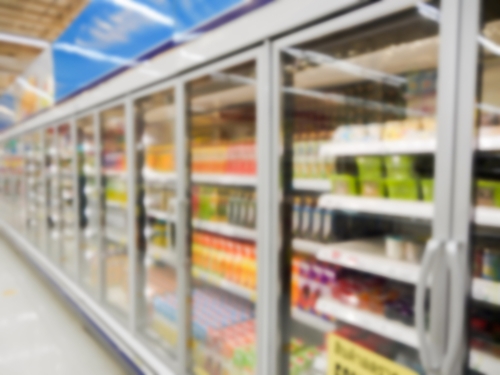Refrigeration is the cornerstone of any grocery store or supermarket selling fresh goods, but refrigeration systems are also some of the biggest expenses retail food stores assume, not to mention a considerable risk to inventory if they suddenly break down.
To stay ahead of the game, business leaders have turned to smarter, more comprehensive energy management strategies including the purchase of Energy Star products and greater monitoring of equipment performance. But as times change, supermarkets and grocery stores will need to adjust their policies regarding energy efficiency and general refrigeration upkeep to continue to be competitive. What does the future of commercial refrigeration hold for the supermarket sector?
Save energy in supermarkets to reduce the high cost of commercial refrigeration
Obviously, the challenge of energy efficiency represents the major crux in innovating commercial refrigeration technology. A 1996 study performed by the Office of Building Technologies at the U.S. Department of Energy revealed commercial refrigeration alone expended 990 trillion Btu every year. If we carry that figure into the present day, that’s more than 1 percent of the total energy consumed by the entire U.S., according to the U.S. Energy Information Administration.
“Supermarkets are some of the most energy-intensive retail businesses.”
Supermarkets have felt the pain for a while. According to the DOE, supermarkets are some of the most energy-intensive retail businesses, with most of their electrical load devoted to refrigeration. However, as expensive as refrigeration can be for grocers, energy savings also provide a healthy financial return if businesses are willing to invest in new energy-efficient appliances. For every dollar of energy savings, from electricity or other resources like natural gas, the effect on store profits is comparable to raising sales nearly $60. As such, when store owners decide to invest in commercial refrigeration equipment, for either the frozen foods aisle or the prepared foods department’s fresh ingredients, efficiency should be first priority.
Preventative maintenance stops faulty refrigerators from rotting away profits
Changing how refrigerators and other commercial appliances operate also includes changing how owners care for their equipment.
Many industries have seen the light when it comes to how they repair their most valuable assets. In the past, businesses have utilized a reactive maintenance model. Simply put: If it ain’t broke, don’t fix it. Although reactive maintenance allows businesses to retain upfront costs by avoiding repairs until they’re absolutely necessary, holding off until a serious breakdown occurs isn’t inexpensive either, nor is it good for the equipment in question. Emergency repair costs are almost always much higher than those scheduled in advance.
On the other hand, preventative maintenance programs assess equipment functionality on a regular timetable, regardless of incident. For supermarket refrigeration, this can be a game changer – preventative maintenance could feasibly reduce product losses caused by broken refrigeration to next to nothing. Preventative maintenance personnel are also more likely to catch small dips in performance during their scheduled check-ins, which can be just as harmful to goods as a complete equipment meltdown.
While the value of such a benefit depends wholly on the size of the supermarket and the average performance of its refrigerators, partnering with commercial grocery equipment distributors who offer preventative maintenance contracts may be a worthwhile consideration for store owners thinking about their next steps.
